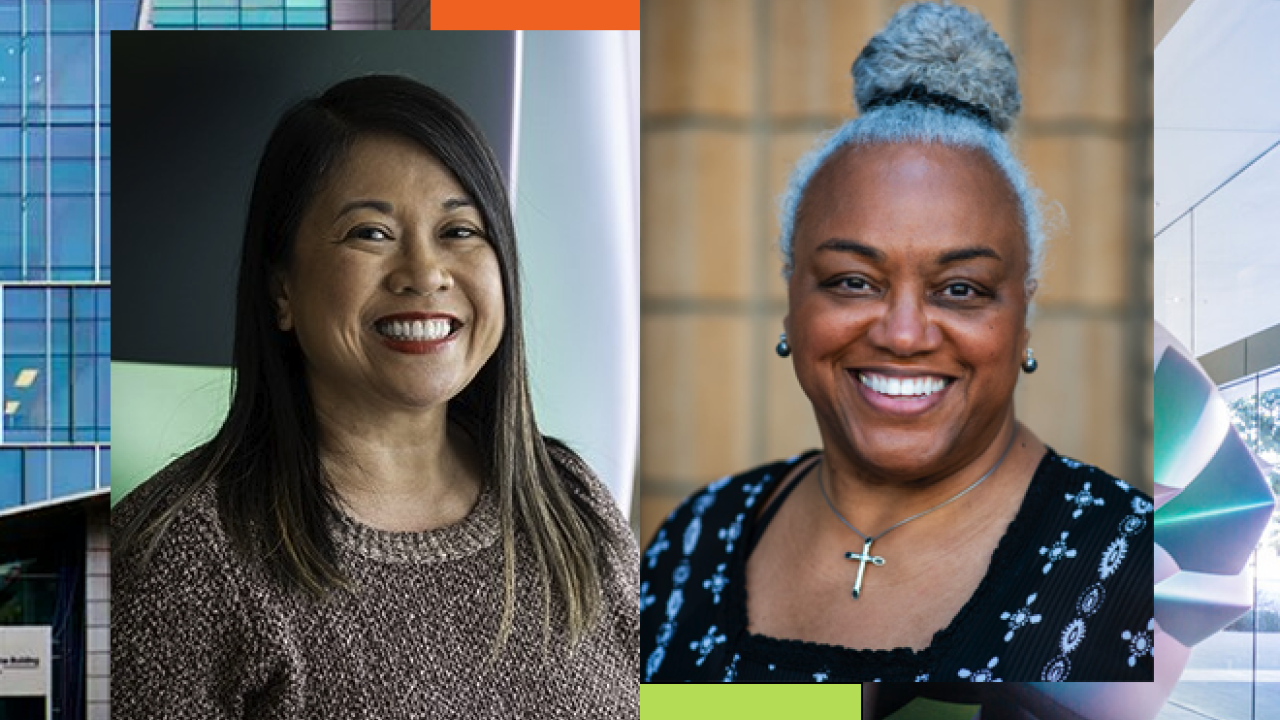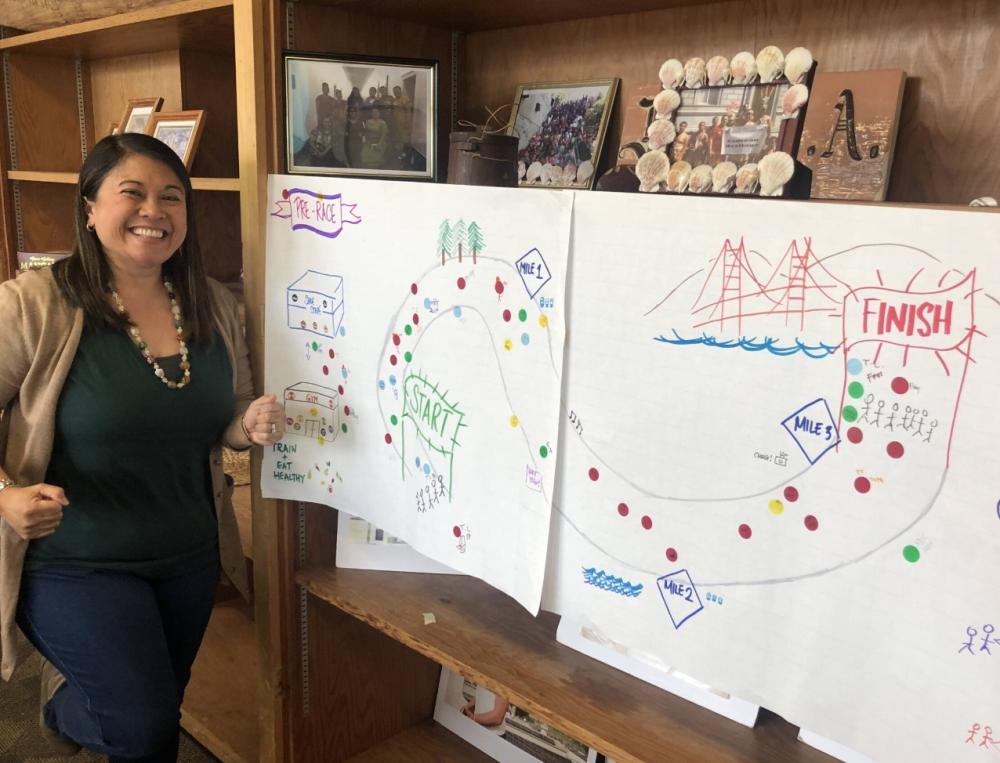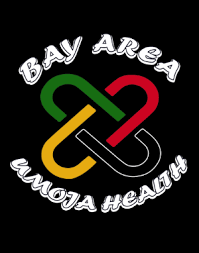
Roxanna Bautista and Lisa M. Tealer co-chair the HDFCCC Community Advisory Board
Earlier this year, Roxanna Bautista and Lisa Tealer were appointed co-leaders of the Cancer Center’s Community Advisory Board (CAB). Collectively, Bautista and Tealer have more than 40 years of advocacy work in diversity, equity, inclusion, and empowerment, having been exposed to community work at young ages by their parents. There is no advisory group more important than the CAB in guiding the Cancer Center in its efforts to work in and with the communities it serves to ensure equitable access to care. Below, Bautista and Tealer discuss their community advocacy work and the CAB’s important role as a partner to the Cancer Center.
Roxanna Bautista is founder of Rise Up Solutions.
Lisa M. Tealer is executive director, Bay Area Community Health Advisory Council (BACHAC), and co-lead, Umoja Health San Mateo County.
Q. Please tell readers a bit about your backgrounds. Where did you grow up? How long have you lived in the Bay Area?
Bautista: I am a Filipina born in Manila, Philippines. My mother was a doctor, and my father was an accountant. We immigrated to San Francisco when I was three years old, and I have lived in the Bay Area for 48 years. I received a Bachelor of Science from University of California, Davis and a Master’s in public health from Loma Linda University. I am married to Michael and have two sons named Mayson, a college freshman, and Evan, a high school sophomore.
Tealer: I am a native San Franciscan and Bay Area native and identify as a straight-cis Black woman with a multicultural background. I was born and lived in San Francisco in the Haight-Ashbury, Western Addition and Diamond Heights neighborhoods until I was 14, and then my family moved to Daly City and then Foster City. I went to college in Oakland and attended Mills College, then moved back to Foster City, and then returned to the East Bay. I love the Bay Area and the diversity of cultures, people and climates.
I spent 30+ years in the biotech industry, half of them in manufacturing, and research and development before transitioning to human resources and the diversity, equity and inclusion space. Before I became the executive director of BACHAC, I was a BACHAC volunteer for over 10 years.
Q. You each have more than 20 years working and leading in diversity, equity, inclusion, and empowerment. Please talk about your individual career paths and why you chose them.
Bautista: While I was in graduate school, I researched health issues affecting the diverse Asian American, Native Hawaiian, and Pacific Islander communities and presented these in one of my health promotion/health education classes. From that moment, I knew I wanted to work with and for these communities. I was determined to land a field practicum with an organization serving Asian American, Native Hawaiian and Pacific Islander communities.

When I secured an internship at the national health and policy advocacy organization of the Asian & Pacific Islander American Health Forum (APIAHF), I did not expect to spend almost 16 years of my public health career there. I appreciated being involved in chronic disease prevention and control at statewide and national levels and in providing community engaged and tailored capacity building assistance to community-based organizations, public health departments, and other sectors.
More recently, I lead Rise Up Solutions and provide leadership coaching and program consulting to non-profit organizations, collaboratives, foundations, state health departments and more.
Tealer: I believe diversity, equity and inclusion was always a part of my “DNA.” Growing up in the Bay Area I had friends from all different backgrounds and a multicultural family. When I worked at Genentech, I was one of the co-founders of the Black employee resource group (the first employee resource group at Genentech), and then I was approached to expand a small DEI department. I was able to blend my technical background with my passion for equity, diversity and inclusion. I was able to work with different departments on different initiatives, as well as initiatives across an entire company (supplier diversity, universal design, learning and development, community investment).
When I decided to retire, I had volunteered for the Bay Area Community Health Advisory Council (www.bachac.org) for many years. I was approached by the co-founder to be the interim executive director and then the executive director. About 18 months later I was asked to be a CAB member for the UCSF HDFCCC, and now two years later I am honored to be the CAB co-chair with Roxanna Bautista.

I still continue my DEI work as a consultant with a variety of organizations. Currently, I am also honored to be the co-lead for Umoja Health San Mateo County. I enjoy being part of these collaborations with community members, CBOs, health care organizations, and public health organizations.
When Umoja Health Founder Dr. Kim Rhoads asked me to start and co-lead Umoja Health, I had no idea where it would lead. It’s been a wonderful experience and a great service to our community. It started with the pandemic and now we’re leveraging the model to address health disparities and injustices in underserved communities in San Mateo County. Visit: www.umojahealth.org
Q. At what age did you feel drawn to community engagement or activism? Were there people or events that affected or inspired you?
Bautista: Since I was young, I had wanted to be a doctor like my mother. I remember a boy telling me that he didn’t believe that my mom was a doctor and that girls can’t be doctors. I had been exposed to the work my mom did with her patients at hospital, health center, and senior board and care homes. I also knew from a young age that there were community and culture- specific associations out there for immigrant families.
My mom was a part of the Philippine Medical Society of Northern California, which fostered fellowship among Filipino physicians and provided charitable assistance to underprivileged Bay Area residents and medical missions to the Philippines. These physicians and my mother inspired me to give back to the community, especially those experiencing health and social challenges.
Tealer: I am a child of the sixties, and my parents were activists and worked in the community as educators. Other relatives were community organizers. Therefore, community engagement and activism are how I grew up. I saw firsthand how important community engagement and how either individually or part of a group, one can have a positive impact in the community.
Q. When did you join the Cancer Center’s CAB? Why?
Bautista: I joined the CAB in 2003. I participated in UCSF’s Minority Training Program for Cancer Control Research (MTPCCR). By then I had a few years working at APIAHF and led the statewide tobacco control program focused on Asian Americans, Native Hawaiians, and Pacific Islanders. I had successfully written a grant and secured CDC funding to support cancer prevention, control, and survivorship programs and expand the existing Asian & Pacific Islander National Cancer Survivors Network. This network was co-founded by cancer survivor advocates, Susan M. Shinagawa and the late Rev. Frank Chong. I’d met Dr. Rena Pasick and Priscilla Banks during the UCSF MTPCCR and was exposed to the different fields of public health including research. It was then that I was asked to join the CAB and I have been a CAB member ever since. I knew it was important to share my experience in working with Asian Americans, Native Hawaiians, and Pacific Islanders.
Tealer: I joined the CAB in 2020. Gloria Brown, BACHAC co-founder, recommended me to Dr. Kim Rhoads. We spoke, and I learned that the mission of the CAB is aligned with my work in BACHAC and my personal values. Plus, the opportunity to work with Dr. Rhoads and the CAB members was an immeasurable opportunity that I am very grateful for. Now, to be the CAB co-chair with Rox is yet another immeasurable opportunity. I am looking forward to learning more from CAB members, learning more about the cancer center and how we can build more bridges and have an even greater impact.
Q. Would you offer your perspectives on UCSF’s relationships and engagements in the communities it serves? How have you seen these evolve over time? What does UCSF do well in this regard?
Bautista: Over my 20 years on the CAB, I have seen UCSF grow and expand its reach into more geographic regions within their catchment area and engage and involve more diverse community representatives in the CAB, cancer campaigns, and initiatives. After the establishment of the San Francisco Cancer Initiative (SF CAN), I was excited about the possibility of replicating the initiative into other counties. When COVID hit the world, UCSF responded by providing emergency mini grants to communities most impacted by COVID and shared information and resources to help grantees and CAB members navigate their communities.
In addition, UCSF CAB was instrumental in developing and supporting Umoja Health in the counties of Alameda, San Francisco, and San Mateo to connect the communities to COVID-19 testing, vaccination, and other resources. Through these community engagement efforts, UCSF continues to be better informed in carrying out the mission and vision of reducing cancer inequities in their catchment area.
Tealer: UCSF provides many opportunities to establish relationships, partnership and ways to engage. I have been on the UCSF COVID-19 Research and WRAP CAB and have continued as a CAB member for the WISDOM Study and Long COVID. In my personal experience, UCSF is more willing and eager to discuss and learn about equity. There has been an evolution to have deep and sometimes challenging and uncomfortable conversations to have a better understanding and/or outcomes. I also see UCSF in the community, at health fairs, food distribution places, cultural events, schools, partnering with CBOs and others. UCSF provides financial and technical support to organizations that are also committed to the health of our communities. I would encourage UCSF to continue to assess their efforts by gathering input and feedback from the communities they serve and organizations that serve those communities.
Q. What progress needs to be made? What can UCSF do better and how?
Bautista: UCSF can continue to bridge researchers to community partners early in the process of developing projects and proposals. The people’s cancer campaign work has contributed to increasing awareness of cancer screening and education for communities across the San Francisco Bay Area. UCSF can strengthen its patient navigation efforts, guide communities through systemic challenges, and connect them to resources and build on the successes of SF CAN and Umoja Health. UCSF can tap into the expertise of the CAB members and organizations and the CAB committees of Faith Committee, Men’s Health Committee, and the San Francisco Women’s Cancer Network and extend their reach into new and existing geographic areas and community partners.
Tealer: Progress needs to continue to build on a community/patient-first mindset, keeping an equitable and inclusive mindset in all areas of UCSF’s research, business practices, patient care, community engagement, recruitment, retention, access to care, care delivery, professional development/education, etc., with measurable, tangible outcomes and results. In addition, asking themselves who benefits and who is negatively impacted by the decisions that are made and implemented.
More transparency on funding processes, (what gets funded, what does not and why) and community driven assessments on its progress. Does the organization’s workforce and leadership reflect the community it’s serving. More in-depth analysis on who is being served and who is not.
Q. The past few years have seen stronger calls at NCI cancer centers (by the NCI, faculty, and staff) for deeper commitments to diversity, equity, and inclusion in many forms (clinical trials, patient experience, access to care, and growing a diverse workforce). While this must be welcome, it also might feel too long in coming. How can the CAB help the cancer center do this?
Bautista: There is a wealth of experience in the CAB members. Many have worked in cancer programs, health advocacy and education, patient navigation, social services, and are experts in cross-sector collaborations. The CAB can help the cancer center with the diversity, equity, and inclusion efforts through providing technical assistance, capacity building assistance and training. The CAB can be an active resource for the cancer center as it develops and hones its equitable practices, works on engaged collaboration, and ensures that diversity, equity, and inclusion strategies are aligned with the cancer center’s vision, mission, and values.
Tealer: The CAB is a rich source of ideas, with recommendations to help the cancer center embed DEI in its policies and practices (clinical trial design and implementation, staff recruitment, retention, learning and development offerings, delivery of patient care, supplier diversity, communication, advertising/marketing/collateral materials and external partnerships). In addition, how does the cancer center plan to evaluate its progress, both from an internal and external perspective (public dashboard for example). However, commitment also means the resources (i.e. funds) to do this work, beyond transactional programs and activities, needs to be strategically embedded in the culture of the cancer center with measurable outcomes.
Q. In your CAB leadership roles, do you envision new directions or areas of focus for the CAB?
Bautista and Tealer: In our roles as CAB leaders, we have developed a vision:
- Build on the legacy established when the CAB was created to ensure and elevate community perspective to minimize and eradicate cancer, while encouraging impactful cross collaboration between CAB members.
- Continue to keep a pulse that individual CAB members provide and embed in the goals of CAB and the UCSF HDFCCC.
- Underscore and promote the strengths, services, and connections CAB members and their organizations provide to their respective communities, the CAB, and UCSF HDFCCC.
- Influence Cancer Center leadership with a community-first and inclusive mind-set in research projects, policies, and practices.
- To be a model CAB for the Cancer Center and within the UC system and across the state and nation.
Q. Finally, how do you enjoy spending free time? Hobbies? Passions?
Bautista: I love spending time with my family, which can include trips to Disneyland, going to the movies, and enjoying watching college and high school volleyball games. I am an avid reader and bullet journaling enthusiast. I love cooking and backing and watching Hallmark movies (and not just during Christmas).
Tealer: Spending my free time? What’s that? Just kidding! I like to spend free time with my family. Every month, we host a family Pokeno game that has been happening for over 60 years. We’ve lost a few relatives over the years and then new family members join. Right now, the average age is 75. It is so much fun! Sitting around the dining room table, playing a game, and listening to the stories and laughing with my older relatives is the best! Those moments with them is what I treasure most. My other passions are travel, smooth jazz concerts, cruises, and wine. Full-bodied Chardonnays and Cabernet Sauvignons are my favorites!